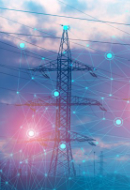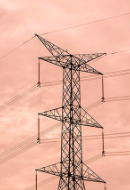Distribution system operators (DSO)
How can network management be transformed into a smarter model?
The energy sector is undergoing a full transition towards a smarter and more sustainable model. Driven by innovation and digitalisation, this process has as its main aim the protection of both the planet and people. Implementing the distribution system operator (DSO) model makes it possible to maximise the integration of renewable energy, as well as accelerating economic decarbonisation while creating value for customers.

Traditionally, electricity networks have been operated under a one-way distribution model, where energy flows from high-voltage transmission networks to end-consumption points. In this set-up, distribution companies act as DNOs (distribution network operators). However, with the rise of distributed generation, the growth of renewables, the electrification of certain activities, energy storage systems and microgrids, this conventional model is evolving into an increasingly smart and digitalised network.
The changes brought about by the energy transition mean that in addition to operating the grid, distributors must be able to manage all resources connected to it – from generators and consumers to those who play both roles (prosumers). In this way, they become system operators, or DSOs, driving the development of a digital, smart and flexible network.
What are DSO (Distribution System Operators)
Distribution system operators are the companies responsible for distributing and managing electricity through distribution networks to the final consumers who use it. Digitalisation is essential for enabling the DSO model, requiring investment in automation, real-time systems, big data and data analytics.
The DSO model uses real-time information exchange solutions to actively manage the resources connected to the distribution grid. Smart meters form part of this solution, enabling two-way measurement of energy flows and real-time communication. This allows outages to be detected and supply to be restored automatically, while also giving customers access to daily consumption tracking through digital platforms.
The differences between distribution network operators (DNO) and distribution system operators (DSO)
- DNO
- DSO

Role
DNO Passive: electricity transport
DSO Active: network management and optimisation

Demand management
DNO No active participation
DSO Implements flexibility solutions

Energy market
DNO No consumer interaction
DSO Facilitates active participation

Use of digital technology
DNO Low
DSO High (smart meters, AI, real-time control)

Renewable integration
DNO Limited
DSO High
Flexibility options for DSOs
The role of the DSO breaks with the traditional vision of network use, enabling a more efficient and sustainable utilisation of existing infrastructure. Flexibility may come from the DSO itself through its own assets, or from generators and consumers who adapt to network needs and make their flexibility available to the operator.
Flexibility options in distribution networks can be used to address two types of requirements: those of the network itself, and those of third parties.
Network needs
Grid flexibility
DSOs can use their own infrastructure to provide flexibility and manage capacity dynamically. Examples include:
-
Storage systems (batteries), which not only improve supply quality but also enable more efficient demand management, facilitate the integration of intermittent renewables and provide fast response capacity in case of network events.
-
Flexible power links (FPL), which help regulate electrical parameters in network connections.
-
Phase-shifting transformers (PST), which optimise power flows between lines.
-
On-load tap changers (OLTC), crucial for maintaining voltage in low-voltage networks with growing penetration of electric vehicles and self-consumption.
Third-party flexibility service providers
These services allow consumers, generators or owners of distributed energy resources such as heat pumps, batteries or electric vehicles to collaborate with the DSO to meet network needs in exchange for financial compensation. This can be arranged through bilateral agreements, where the DSO pays for the use of an external asset, or through flexibility markets, where providers compete to offer the best price. These markets can be short or long term.
Third-party energy needs
-
Non-firm connections
These allow generation or demand to be connected in constrained network areas where new connections would otherwise be limited, by dynamically adjusting allocated capacity depending on availability. This accelerates grid connections. Their management, in real time or on a scheduled basis, requires advanced systems such as Active Network Management (ANM) to monitor and act according to real-time conditions.
-
Peer-to-peer market
This enables prosumers to balance local consumption and generation in areas with renewable oversupply, avoiding curtailments. Although agreements are directly between participants, the DSO must facilitate, supervise and balance the local node in real time, assuming new operational and monitoring responsibilities.

Telecommunications for the smart grid
Telecommunications trends and applications in the smart grid.

Internet of Energy
The future of energy efficiency: the internet of energy.

The road to smart grids
A global transition to a green grid powered by renewables.
The expansion of the DSO model within the Iberdrola Group
Iberdrola Group’s network business has launched the following initiatives, among others:








